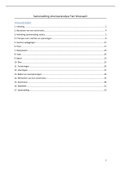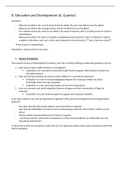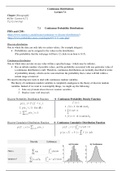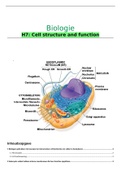------------------------------------------------------------
3.4 Affective disorders
Problem 1: Depression part 1
Learning goal 1: What is depression?
» WORLD HEALTH ORGANIZATION: DEPRESSION AND OTHER COMMON MENTAL DISORDERS – FACTS
Globally: over 300 million people are estimated to suffer from
depression, this is equivalent to 4.4% of the world’s population. The
number is going up, particularly in lower- income countries (2015).
Global and regional estimates of prevalence: depression
» Depression is more common among females (5.1%) than
males (3.6%).
» Prevalence rates vary by age, peaking in older adulthood
(above 7.5% among females aged 55-74 years, and above
5.5% among males). Depression also occurs in children and
adolescents below the age of 15 years, but at a lower level
than older age groups.
» The total number of people living with depression in the world
is 322 million.
» The risk of becoming depressed is increased by poverty,
unemployment, life events (death of a loved one/ break-up),
physical illness and problems caused by alcohol and drug use.
» Globally, it is estimated that 4.4% of the global population suffer from depressive disorder, and 3.6% from
anxiety disorder.
Common mental disorders refer to two main diagnostic categories: depressive disorders and anxiety disorders.
Depressive disorders are characterized by sadness, loss of interest or pleasure, feelings of guilt or low self-worth,
disturbed sleep or appetite, feelings of tiredness, and poor concentration. Depression can be long lasting or recurrent,
substantially impairing an individual’s ability to function at work or school or cope with daily life. At its most severe,
depression can lead to suicide. Depressive disorders include two main sub-categories:
o Major depressive disorder/ depressive episode: which involves symptoms such as depressed mood, loss of
interest and enjoyment, and decreased energy; depending on the number and severity of symptoms, a
depressive episode van be categorized as mild, moderate or severe.
o Dysthymia: a persistent or chronic form of mild depression; the symptoms are similar to depressive episode
but tend to be less intense and last longer.
A further important distinction concerns depression in people with or without a history of manic episodes.
o Bipolar affective disorder typically consists of both manic and depressive episodes separated by periods of
normal mood.
o Manic episodes involve elevated mood and increased energy, resulting in over-activity, pressure of speech and
decreased need for sleep. Bipolar affective disorder is not included in the data below.
Learning goal 2: Psychological theories and psychological treatment of depression
» ABRAMSON (2002): COGNITIVE VULNERABILITY- STRESS MODELS OF DEPRESSION IN A SELF-REGULATORY AND
PSYCHOBIOLOGICAL CONTEXT
There are cognitive processes in the etiology, maintenance, and treatment of depression.
Aaron Beck (1967): developed a cognitive theory that emphasized the negative ‘automatic thoughts’ that seemed to
trigger depressive symptoms among his patients.
Martin Seligman (1975): emphasized that maladaptive cognitions such as pervasive expectancies of no control over
events (learned helplessness) could precipitate depressive symptoms.
Two cognitive theories of depression
Some people are more vulnerable to depression than others. According to the hopelessness theory and Beck’s theory,
the meaning or interpretation that people give to their experiences importantly influences whether they will become
depressed and whether they will suffer repeated, severe, or long-duration episodes of depression.
Hopelessness Theory (Abramson, 1989): the expectation that highly desired outcomes will not occur, or that
highly aversive outcomes will occur and that one cannot change this situation – hopelessness – is a cause of
depressive symptoms, specifically the hypothesized syndrome of hopelessness depression (HD). Symptoms of HD
include sadness, retarded initiation of voluntary response, suicidality, low energy, apathy, psychomotor retardation,
sleep disturbance, poor concentrations and mood-exacerbated negative
cognitions.
» Negative life events (or the non-occurrence of desired positive life
events) are ‘occasion setters’ for people to become hopelessness.
Hopelessness and in turn depressive symptoms are likely to occur when
negative life events are 1) attributed to stable (likely to persist over time)











